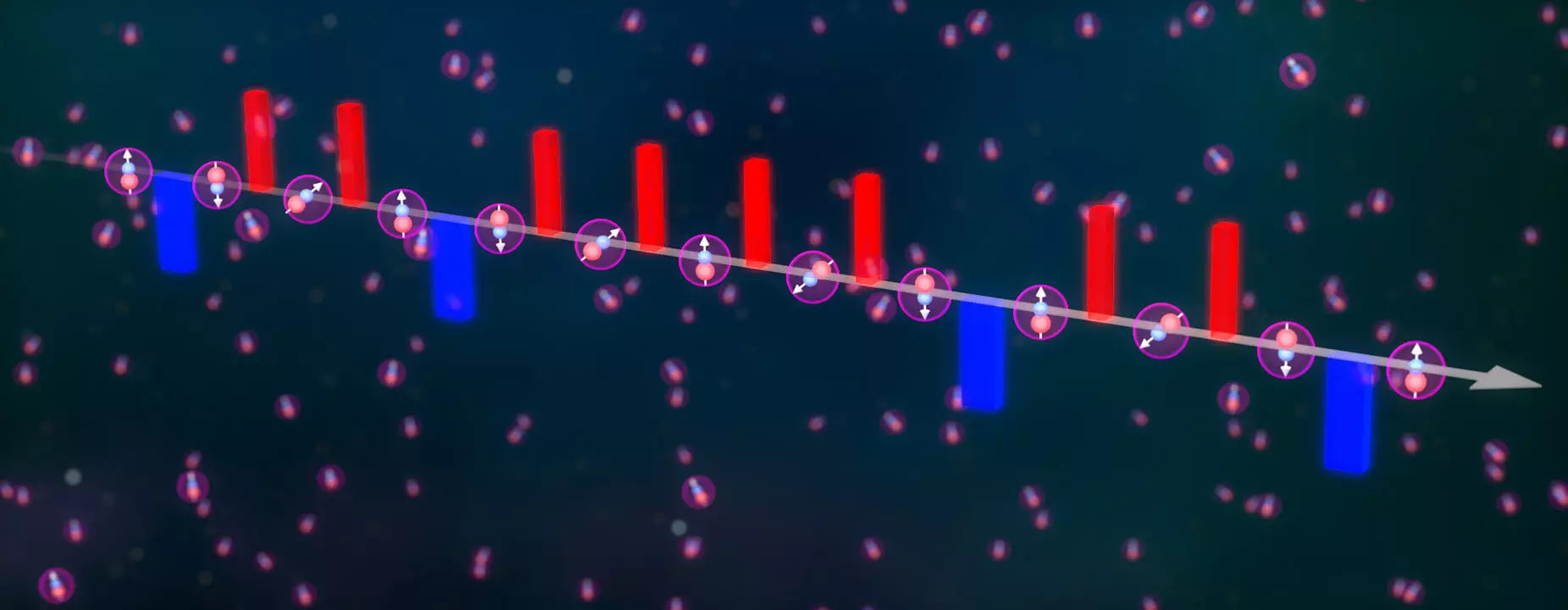Quantum spins form the basis of many intriguing phenomena within the universe, such as superconductivity and magnetism. While these principles are well-established theoretically, realizing controllable physical systems that manifest these interactions in a laboratory setting has proven to be a significant challenge for physicists. The exploration of new methods and technologies is crucial for unlocking the potential of quantum mechanics, particularly as researchers strive to harness these principles for various applications.
In a groundbreaking study recently published in Nature, a formidable collaboration between researchers from JILA, NIST, and Harvard University introduces innovative techniques to manipulate quantum spins in ultracold potassium-rubidium molecules. Under the guidance of Professor Jun Ye, the team applied a method known as Floquet engineering through periodic microwave pulses, effectively tuning interactions among the molecules. Floquet engineering has garnered significant attention for its ability to induce various quantum effects reminiscent of a “quantum strobe light.” This concept allows researchers to control the dynamics of particles similarly to how adjusting the frequency and intensity of light affects the perception of motion in traditional physics.
One of the critical quotes from JILA graduate student Calder Miller highlights the necessity of engineering interactions to unveil new physics, particularly concerning polar molecules. These molecules exhibit complex energy structures influenced by a range of physical constants, making them an exciting platform for sophisticated quantum simulations. Challenges inherent in the setup, such as the limitations on the number of microwave pulses, drove the researchers to collaborate with the electronics shop to develop cutting-edge technology—an FPGA-based arbitrary waveform generator—that allows for a potentially limitless application of pulse sequences. As Miller emphasizes, this advancement enables researchers to remove noise and adjust interactions more effectively.
Prior to manipulating quantum interactions through Floquet engineering, the research team successfully encoded quantum information within the two lowest rotational states of potassium-rubidium molecules. This foundational step is critical, as it establishes the starting point for exploring quantum dynamics. Following this, the researchers demonstrated their ability to tweak specific quantum interactions using known spin models, namely the XXZ and XYZ models. These models serve as essential frameworks for understanding how inherent quantum spins of particles interact, a fundamental part of investigating both magnetic materials and broader many-body phenomena.
Molecular Dynamics as a Metaphor for Spin Interaction
The complexities of these spins could be visualized using an engaging analogy—comparing them to dancers in a grand ballroom. Each molecule interacts with others as they adjust their “dance moves” according to their partners. The adjustments—whether pulling or pushing—mirror the behavior of quantum spins that may align or oppose one another. By using Floquet engineering, researchers could guide these “dancers,” cultivating a deeper understanding of their dynamics and how they evolve based on interactive forces in the system. This nuanced dance of spins not only elucidates quantum interactions but also opens doors for practical applications in quantum sensing.
Two-Axis Twisting: Enabling Entangled States
One particularly captivating outcome of this research was the observation of two-axis twisting dynamics. This technique problems pushing and pulling quantum spins along two orthogonal axes—a feature crucial for the generation of entangled states, which could have far-reaching implications for advanced sensing technologies and precision measurements. The capability to create spin-squeezed states through this process minimizes quantum uncertainty in one spin while increasing it in its perpendicular counterpart, heightening sensitivity levels to further investments in spectroscopic experiments.
The Road Ahead: Implications and Future Directions
While the concept of two-axis twisting was proposed decades ago, its experimental execution had to wait until this latest research breakthrough in 2024. In tandem with this study, other approaches using cavity quantum electrodynamics have also demonstrated potential in the field, indicating a burgeoning interest and a range of methodologies for realizing these phenomena.
As the team aims to enhance their detection capabilities to confirm the existence of entangled states, the possibilities for future research become apparent. The interplay of advanced experimental setups and the engineering of molecular interactions promises a wealth of opportunities for unraveling the complexities of quantum systems and could provide invaluable insights into both fundamental physics and the development of quantum technologies.
Through these partnerships and innovations, physicists are stepping closer toward unlocking the secrets of the quantum realm, paving the way for a new epoch in science where quantum mechanics is not just theorized but applied in transformative ways.


Leave a Reply